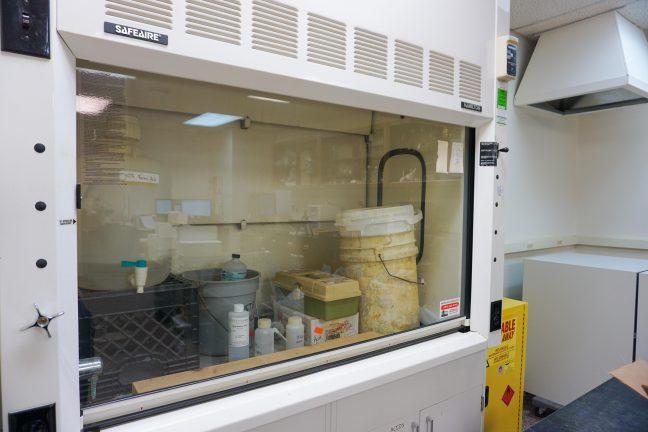From the fourth quarter of 2023 to the fourth quarter of 2024, on-time delivery rates for First Class 2-day mail in Wisconsin have dropped from 91.3% to 70.5%, according to USPS. This comes as the USPS pilots a new cost-savings plan, Local Transportation Optimization, in Green Bay, which involves ending the evening pickup of mail from post offices to delivery centers, according to Spectrum News.
In Richmond, Virginia, the second site of the USPS LTO pilot program, the amount of first-class mail delivered on time dropped 21% from Oct. 28, 2023, to March 1, 2023, according to Spectrum News. The USPS has said that the drop in on-time deliveries in Richmond is the result of several factors and it is impossible to determine how much of an effect LTO had on late deliveries.
Nevertheless, at 70.5%, on-time delivery rates in Wisconsin are the second lowest in the country — only ahead of Georgia’s abysmal 40.2% on-time delivery rate. In an election year, it is more important than ever that the mail system functions efficiently and effectively in Wisconsin.
The current on-time delivery rate is alarming when considering the increased strain that the USPS and election officials will face in this hair’s breadth election season — particularly at a time when the quick, accurate processing of ballots feels more important than ever — but voters should not be unduly concerned about USPS’ ability to transport absentee ballots in this election.
Wisconsin’s recent record in managing absentee ballots, especially during primaries, has been problematic. Issues began in the spring 2020 primary, when a Republican-led legislature blocked Gov. Evers’ attempts to delay the primaries and extend mail-in ballot deadlines. Republicans, led by Robin Vos, insisted in-person voting was safe, even as polling places were closed due to poll worker shortages, according to Time magazine.
The distribution and processing of mail-in ballots were also riddled with problems, with voters not receiving absentee ballots to voters improperly filling them out, and ultimately at least 9,000 absentee ballots requested by voters were never sent, according to the New York Times.
Wisconsin largely cleaned up its act in the general election, though mail-in ballots remained a point of contention for the outgoing Republican party. One area that Republicans latched onto though was the overnight “ballot dump” in Milwaukee, as the city reported 170,000 ballots overnight, turning the tide in favor of Biden, according to Wisconsin Watch.
Since then, the Wisconsin assembly has attempted to address the problem of the ballot dump by passing legislation that would enable clerks to begin processing absentee ballots the Monday before the election to avoid the ballot spikes that occurred in 2020. Unfortunately, this legislation stalled in the State Senate, according to WPR.
Still, the spring 2024 primary refreshed concerns about the mail-in ballot process in the state. Madison resident Martha Siravo, who had to respond to a notice from the Madison city clerk’s office to be mailed a ballot for the November election after missing the April primary, did not receive a notice until early June, after the response deadline, according to The Cap Times.
This comes as the USPS, under the leadership of Postmaster General Louis DeJoy, faces growing scrutiny from election officials ahead of the November election. On Sept. 11, National Association of State Election Directors President Mandy Vigil, along with other high-ranking election officials and the presidents of 29 local election official associations sent a joint letter to US Postal Service Postmaster Louis DeJoy on behalf of state, territorial and local election officials nationwide regarding concerns about election mail service.
Among the issues cited were inconsistent training for USPS staff, exceptionally long delivery times and increases in mail returned as undeliverable.
With all this in mind, it is easy to feel very alarmed by the USPS troubles heading into the election, but, if past performance is any indicator of future success, then voters should have faith in USPS — and still get their ballots in as early as possible.
In the 2020 general election, USPS handled nearly 64 million mail-in ballots and delivered 99.89% within seven days, according to the USPS and the New York Times. In the 2022 midterms, 99.93% of ballots were delivered within the same time frame, according to the USPS. Yet mail-in ballots accounted for just .11% of the Postal Service’s total mail volume in 2020. Heading into this election, USPS has promised to reinstate additional measures to help handle the increased election mail volume. These measures include additional pickups, extra deliveries and special sort plans on processing equipment to expedite and enhance ballot delivery, according to USPS.
In Wisconsin, the Postal Service will also pause the LTO pilot program, which has been blamed for slowing down delivery rates in Wisconsin, until after the election, according to the Milwaukee Journal Sentinel. The postal service also has measures in place to “rescue” ballots that are entered late into the system, though those measures are a last resort, according to the Milwaukee Journal Sentinel. In Wisconsin, mail-in ballots must reach election officials by 8:00 p.m. on election day.
Voters’ concerns about the effectiveness and speed of the Postal Service in Wisconsin are understandable. The state currently has the second lowest on-time delivery rate for first-class 2-day mail in the country and has had problems with mail-in ballots in the last two presidential primaries. Yet, the Postal Service rose to the occasion in 2020 — when nearly 41% of Wisconsin voters voted by mail — and will do so again in 2024. In the 2020 general election, only 0.05% of mail-in ballots were not returned to election officials before polls closed, according to a report from the Wisconsin Elections Commission.
In this election, the Postal Service will reinstate important mail-in ballot processing measures and pause the LTO trial in Wisconsin, all of which should enable the Postal Service to handle mail-in ballots with the same effectiveness that they did in the 2020 general election.














